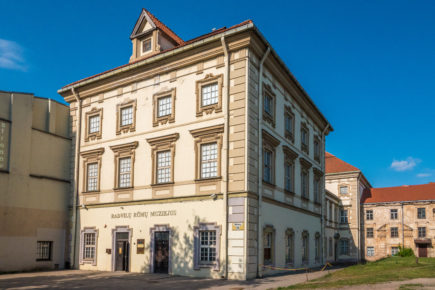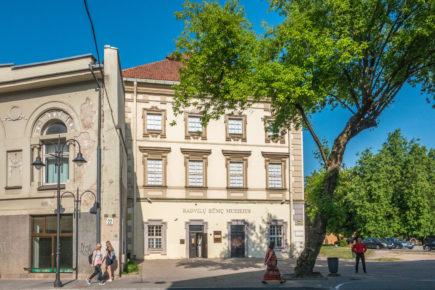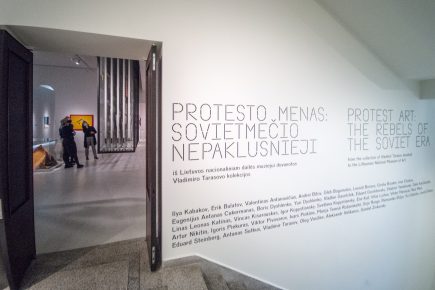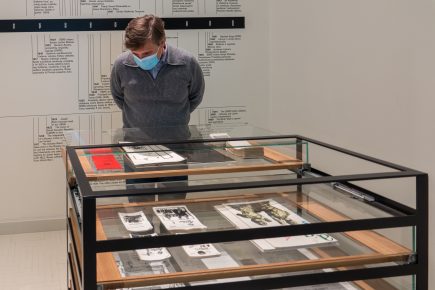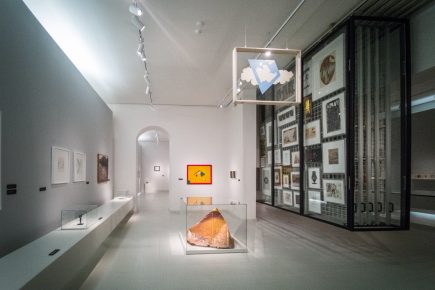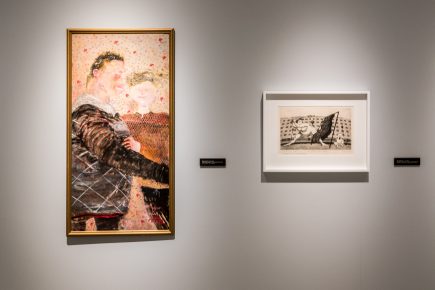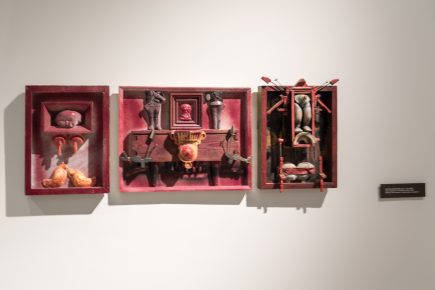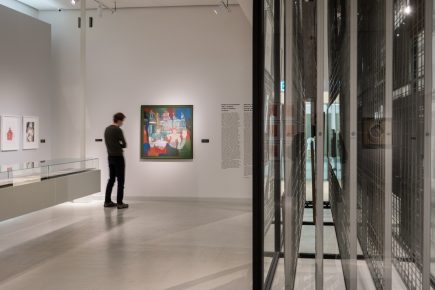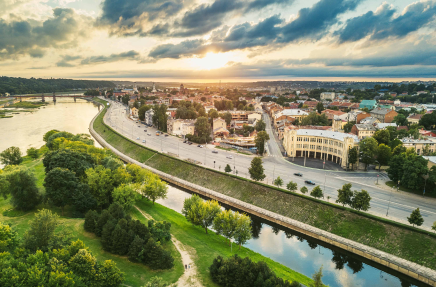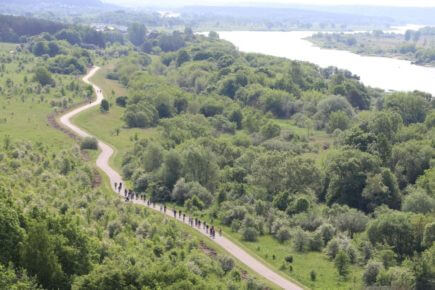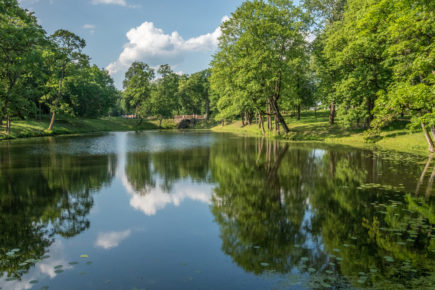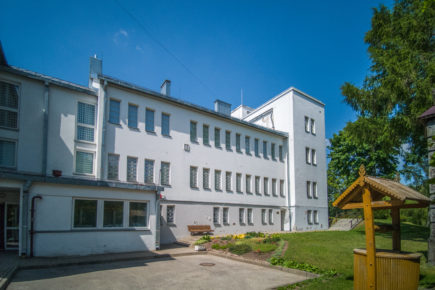When walking in the centre of Vilnius, it is worth visiting the Radvilos Palace. Representatives of the Radvilos family, headed by of one of the most famous Lithuanian dukes, once lived in this place. The most influential family of nobles of the period of the Grand Duchy of Lithuania has left a huge piece of cultural heritage, preserved and visited by tourists to this day. Their cultural path influenced all of Lithuania; there was no corner of the country left unmarked by the most prominent members of the Radvilos family.
The Radvilos Palace is one of the main cultural heritage sites of the family bearing its name. The territory of the palace today is spread out over three hectares in the heart of Vilnius.
Historical sources indicate that in the 16th century, a park-type garden behind the city’s defensive wall known as Great Lukiškės occupied the space the Radvilos Palace currently stands on. In the middle of the 17th century, the Grand Hetman of Lithuania, Vilnius’ Voivode Jonušas Radvila (1612–1655), built a residential palace designed by architect Jonas Ulrichas. The Palais Luxemburg in Paris inspired the design of the early Baroque palace, which is made up of five three-storey pavilions and magnificent halls. The U-shaped palace of Renaissance form and Mannerist decor consisted of four two-storey buildings connected by five three-storey pavilions at the corners. The inner courtyard was enclosed on the southwest side by a low masonry fence with two gates. The palace was depicted on a medal made by German artist Sebastian Dadler (1586–1657), forged for Jonušas Radvila’s inauguration to the Voivode of Vilnius in 1653. In the 17th century, the palace was depicted in watercolour by Vytautas Gabriūnas (1930–1992).
The palace did not escape the effects of war; it suffered greatly during the fires caused by a war in the 17th century. As such, in the 19th the Radvilos family representative Dominykas Radvila decided to transfer the palace over to a charity society operating at that time. The palace was run by the charity society until 1940, during which time the destroyed palace buildings were either demolished or rebuilt.
Restoration work on the palace started in 1967, as only two buildings of the palace remained – the northern and eastern buildings and the northern pavilion. In 1984, the western pavilion was successfully restored. Today, the left side of the palace has survived and a division of the Lithuanian Art Museum has been in operation there since 1990.
Radvila Juodasis was born in 1515 to the family of Trakai Castellan, Marshal of the Grand Duchy of Lithuania Jonas Radvila and his second wife Ona Kiškaitė in Nesvyžius. By the time he was seven, he had already lost his father, and in 1528 when his mother married Stanislovas Kęsgaila, he and his siblings came under the care of their uncle, Vilnius Castellan Jurgis Radvila.
The early political rise of Radvila Juodasis was due to a close friendship with Sigismund Augustus, the son of King Sigismund the Elder and Bona Sforza. Radvila Juodasis was the main representative of a group of the Grand Dutchy of Lithuania nobles. Dissatisfied with the stagnation of Sigismund’s the Elder rule, the group initiated the process of handing over Lithuanian rule to the young king. The Brasta Seimas approved this process on 6 September 1544, and Lithuanian leadership was passed on to Sigismund Augustus, who was 25 years old at the time. It also marked the beginning of the establishment of Radvilos, his relatives and supporters in the highest positions of the state. Radvila Juodasis became the most influential state politician and the closest friend of the ruler of the Grand Duchy of Lithuania. Moreover, he maintained the undoubted position of the state leader recognised by all his contemporaries until his death. During this period, Lithuania turned to the path of cultural reform and acquired a radically new cultural face.
Radvila’s reform process was spontaneous and dictated by circumstances rather than being coherent, focused, and strategically thought through. This may have been influenced by the fact that in the middle of the 16th century, Lithuania had little cultural background and only the initial beginnings of an educational intellectual network. Facing the challenges of the Reformation in Europe during this period, the Church of Rome in Lithuania turned to the path of radical opposition, not dialogue with evangelicals. The main weapon of the Roman Church was ‘tradition’ and ‘paternal customs’, and all proponents of reform were quite hysterically called, according to Husovian, ‘pernicious innovators’ leading the country to destruction.
Mikalojus Radvila Juodasis was the first Lithuanian nobleman to sharply criticise the Roman Catholic Church. After rising to the top of the political elite, Juodasis succeeded in bringing together supporters of reform, despite great resistance from the Holy Throne and the ideals of the church tradition defended by his countrymen.
In 1545–1548, Radvila Juodasis’ activities were related to a chain of deaths and weddings that changed the face of the Lithuanian political landscape, in which he played an important role. On 15 June 1545, after the death of Queen Elizabeth, the story of King Sigismund Augustus and Barbora Radvilaitė, which ended in a secret marriage in 1547, began to unfold rapidly. Radvila Juodasis was a central figure both in settling financial contracts with the imperial manor (a trip to Vienna in 1547) and in legalising the king’s marriage. Finally, in 1548 February, Radvila Juodasis in Sandomiras himself celebrated his wedding with Elizabeth Shidlovecka, and in March of the same year brought his wife to Vilnius, where in 1549 their first son was born – Mikalojus (Našlaitėlis). Immediately after the wedding, Juodasis was involved in political issues related to the death of Sigismund the Elder in 1 April 1548. The fact that Sigismund Augustus became a Polish monarch and that great resistance to the coronation of Barbora Radvilaitė was overcome is the result of the activities of Radvila Juodasis between 1548 and 1549.
The Protestant life of Mikalojus Radvila Juodasis, which lasted for about fifteen years (until his death), changed the situation of culture and Christian consciousness in the Grand Duchy of Lithuania. In Lithuania, he founded the Independent Reformed Church, began the history of the Lithuanian press and books on his estates in Brasta (1553), where he published the first Lithuanian Bible, in which fifteen translators and editors participated, and formed and founded an independent evangelical doctrine. Thanks to M. Radvila Juodasis, for the first time in the history of cultural thought, Lithuania started a religious dialogue with the main Western thinkers on an equal ground.
The first public signs of M. Radvila Juodasis’ demonstration of Protestant identity were witnessed by the organisation of evangelical services at his estates in Vilnius (Lukiškės) and Brasta in 1553, and the production of the first Lithuanian Latin font printing house (operating until after his death in 1568). On his estates, Radvila Juodasis began to expropriate Catholic churches for the needs of the Evangelicals, and the first separate building of the Evangelical Church was erected by the duke in 1560–1562 in Vilnius on Didžioji Street. His wife Elizabeth was buried in this Protestant chapel in 1562. Later, according to his last wish expressed in his 1565 will written, M. Radvila Juodasis was buried next to his wife (the remains of the 17th century, were reburied in Dubingiai).
